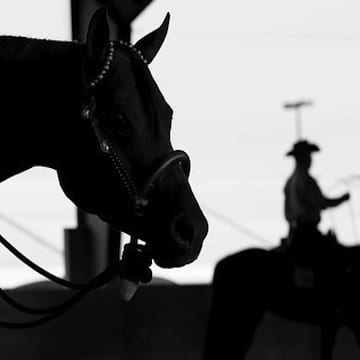While loss of use insurance could cover some of these scenarios, keep in mind that loss of use insurance normally will only cover 50-75% of the horse’s full mortality insurance value, and that is only if the horse is totally and permanently unable to perform its intended use. Also, some insurance companies state that when they pay a loss of use claim that they become the owner of the horse, unless you agree to a lower claim payment amount.
All lease agreements should set out a specific standard of care. The basics would include the quality of care, feed, handling, attention, and stabling customarily given to horses of this type. For high-caliber show horses, this standard should also set out regular veterinarian and farrier care, and that the horse must remain in training or boarded at a particular facility and may not be removed without written permission from the lessor.
Problem #4: Lessee’s Misuse of the Leased Horse
Similar to #3 above, problems often occur when the lessee uses the horse in a manner inconsistent with the understanding or wishes of the lessor. The example used in Problem #2 is also a good illustration of this point. In the example, the lease agreement states that the horse is a show horse and is only to be ridden in arenas with proper footing, but the lessee rides the show horse over rocky trails, making this a clear misuse of the horse. A well-written lease agreement should state the person(s) allowed to ride the horse, the type of training methods, and other types of permitted and non-permitted activities. The more specific the lease, the better it is for both parties and the horse.
Problem #5: The Horse Injures Someone or Damages Property
The most serious and problematic situation is if the horse kills or injures someone or damages someone’s property during the lease. Without a properly drafted lease agreement, the lessor could potentially be liable for damages even though the lessee was responsible for the situation. Most states do have equine activity liability laws, but they do not always provide the coverage one might think against certain types of activities. A proper equine agreement should include a release of liability and indemnification agreement. This means that the lessee accepts full responsibility of all liability relating to the horse during the lease, and agrees to indemnify the lessor if the lessor is sued.
While this article does not cover every issue that could arise in a lease situation, it does bring up several of the most common ones, and should make both the lessor and lessee more aware of all the important items that need to be addressed in the equine lease agreement. No two equine leases are the same, and a one-size-fits-all equine lease form will not address both parties’ issues in every lease situation. Please contact a knowledgeable equine attorney to help ensure that your equine lease is a good experience for you and your horse.
Carrie Russom Quraishi has been active in the equine industry for many years. She is a member of AQHA, NSBA, and NRHA and is an AQHA World Champion and multiple AQHA national high point champion. Based in Frisco, Texas, the Quraishi Law Firm strives to bring strategic solutions to the unique needs of the equine community. Carrie can be reached at (972) 731-4337 or via email at carrie@quraishilaw.com






